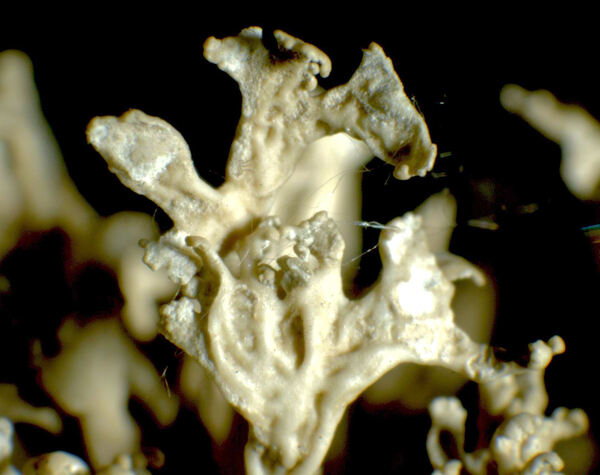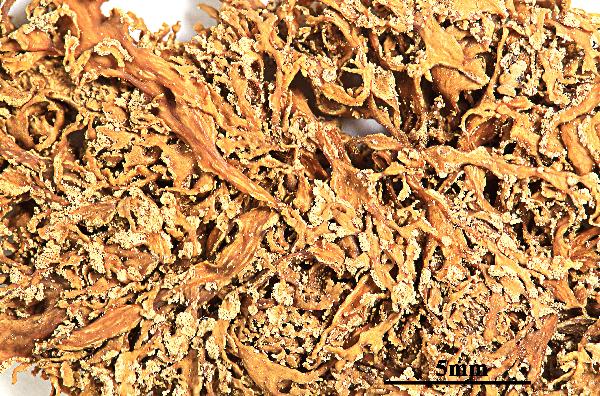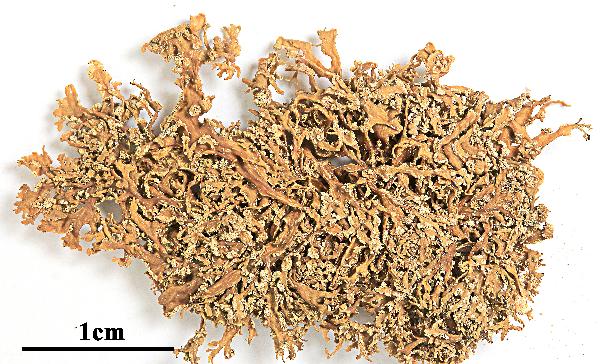Ramalina capitata var. protecta (H. Magn.) Nimis
The Lichens of Italy: 597, 1993. Basionym: Ramalina protecta H. Magn. - Bot. Not., 109: 150, 1956.
Synonyms: Ramalina polymorpha var. protecta (H. Magn.) Clauzade & Cl. Roux
Distribution: C - Sar (Lo Forti & al. 2004).
Description: Thallus fruticose, greenish to greenish grey, 1-2(-3) cm tall, erect to ascending, rigid, abundantly branched, firmly attached by a basal holdfast, several thalli often forming dense carpets on the rock. Branches more or less flattened, 1-3 mm wide, longitudinally striate, with terminal, labriform to finally hood-shaped soralia; soredia granulose, concolorous to thallus. Subcortex cartilaginous; medulla white, compact. Apothecia extremely rare, lecanorine, mostly terminal. Asci 8-spored, clavate, Bacidia-type. Ascospores 1-septate, hyaline, often poorly developed. Photobiont: chlorococcoid. Spot tests: cortex K-, C-, KC- or KC+ pale yellow, P-, UV-; medulla and soralia K- or (rarely) K+ yellow turning red. Chemistry: cortex with usnic acid; medulla without lichen substances, or rarely with norstictic acid.Note: often found together with the other varieties, especially with var. digitellata, but perhaps more frequent under overhangs; not uncommon in parts of Sardinia.
Growth form: Fruticose
Substrata: rocks
Photobiont: green algae other than Trentepohlia
Reproductive strategy: mainly asexual, by soredia, or soredia-like structures (e.g. blastidia)
Commonnes-rarity: (info)
Alpine belt: absent
Subalpine belt: absent
Oromediterranean belt: absent
Montane belt: absent
Submediterranean belt: absent
Padanian area: absent
Humid submediterranean belt: absent
Humid mediterranean belt: very rare
Dry mediterranean belt: extremely rare
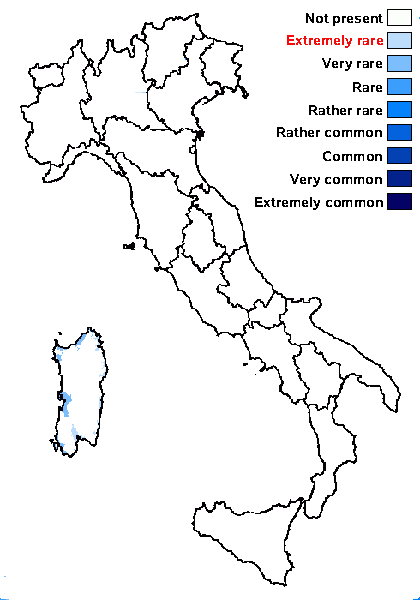
Predictive model
Herbarium samples
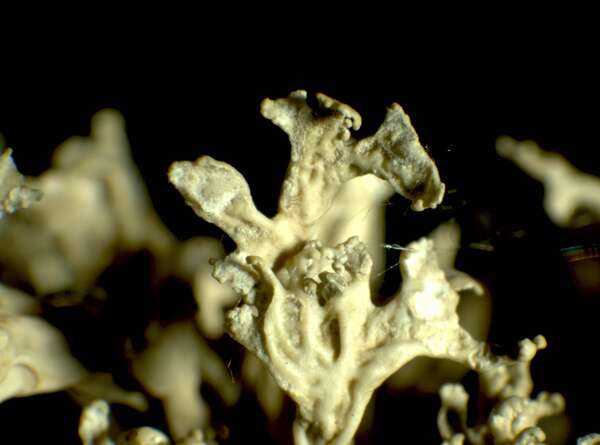

P.L. Nimis; Owner: Department of Life Sciences, University of Trieste
Herbarium: TSB (14088)
2001/12/04
detail of soralia, seen from below
Growth form: Fruticose
Substrata: rocks
Photobiont: green algae other than Trentepohlia
Reproductive strategy: mainly asexual, by soredia, or soredia-like structures (e.g. blastidia)
Commonnes-rarity: (info)
Alpine belt: absent
Subalpine belt: absent
Oromediterranean belt: absent
Montane belt: absent
Submediterranean belt: absent
Padanian area: absent
Humid submediterranean belt: absent
Humid mediterranean belt: very rare
Dry mediterranean belt: extremely rare

Predictive model
| Herbarium samples |


 INDEX FUNGORUM
INDEX FUNGORUM
 GBIF
GBIF
